How to remove shellac from nails at home?
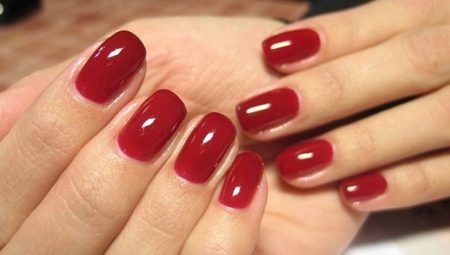
There are situations when you need to get rid of a manicure at home. Conventional varnish is easy to handle. But if shellac is applied to the nails, you have to work a little. However, this task is quite feasible. This article will help you find out in what ways you can remove shellac from marigolds without going to the salon.
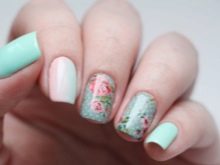
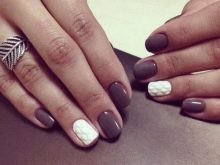
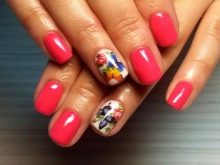
Can I remove shellac myself?
This nail polish was introduced to the manicure industry in 2010. Shellac immediately gained popularity, as this composition has unique and more beneficial properties (in comparison with conventional varnishes). We can say that this is a kind of combination of two components: colored varnish and strengthening gel. Thanks to this, the coating on the nails lasts much longer.
This increased durability also brought some inconvenience. It turned out to be beyond the power of removing such a coating from the nails with the means by which ordinary nail polish can be easily removed. True, for manicure salons this has become a big bonus. Now clients often turn to the master not only to apply a manicure, but also to get rid of it later. However, many were not afraid to try to remove shellac from their nails at home.
Through trial and error, resourceful girls still managed to find simple ways and means with which you can independently carry out such a procedure.
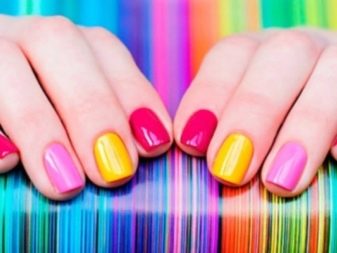

How to remove?
You won't be able to remove shellac quickly, so please be patient. On average, the entire process takes about an hour.
In salons, this procedure is faster. Professional craftsmen use two methods to remove this coating from nails.
- One of them is that the shellac layer is first treated with solvent compositions. To do this, fingers with manicure are wrapped in mini-compresses with a special liquid. After the coating has softened, it is removed with a gentle mechanical method. An alternative to this particular method of shellac removal is available for home use. It will be discussed in detail below.
- The second method appeared not so long ago. The coating is processed with a special manicure machine that grinds off the shellac layer. This device is called a router. This method works best for acrylic nails. Careful mechanical processing does not damage the grown nails, while solvents can have a negative effect on the acrylic layer.
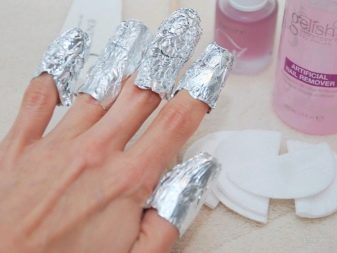
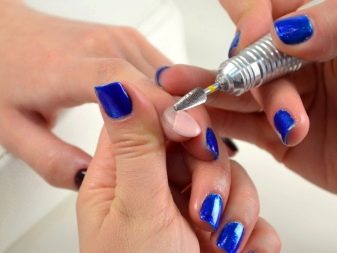
To remove the shellac coating properly and not harm your nails, you will need to prepare the necessary tools and auxiliary materials in advance.
- Several cotton pads or pieces of gauze. They will need to be moistened in a dissolving liquid and applied to the nail plates. Therefore, for convenience, pre-cut them into small pieces that completely cover each nail. If you are using cheesecloth, then the pieces should be folded in 3-4 layers.
- Foil or special silicone nail pads. Retaining caps are available from stores. They are sold in sets and are very easy to use. They can be used a large number of times, just rinsing and drying after each use. Foil is a more affordable and economical option. Cut it into strips about 2 times the width of your nails. The length of these strips should be such that it would be enough for 3-4 turns around the upper phalanx.
- Liquid for removing gel polish. Any product containing acetone will also work.
- Orange wood sticks used to push back the cuticle. With this simple tool it is convenient to clean off the remnants of the softened shellac layer from the nail plates.
- A medium hard file for polishing and a hard abrasive file. The second is useful for cleaning off the top protective and densest layer of varnish, the so-called top.
- A moisturizing oily cream or grape seed oil.

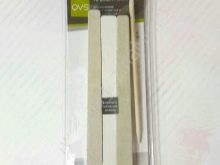
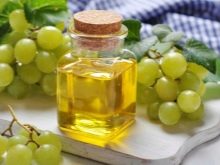
This is the standard kit for the most convenient and effective shellac removal at home.
If you don't have any special liquid or acetone-containing products at home, you can replace them with isopropyl alcohol. This substance also dissolves hard varnish well. This product is sold in household chemistry departments and hardware stores. One has only to remember that if you decide to use isopropyl alcohol, you should not keep it on your nails for more than 15 minutes.
You can use cling film instead of foil to wrap your fingers.
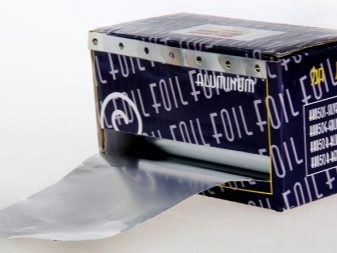
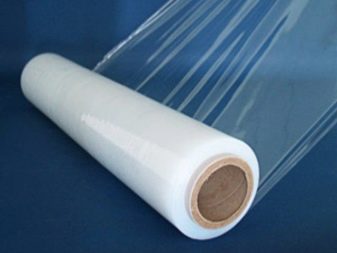
The procedure for removing the varnish layer using foil or onlays.
- Apply a nourishing cream or oil to the skin around your nails. This will help protect it from the effects of the solvent composition.
- The surface of the shellac coating should be slightly sanded with a file to remove the most stable top layer. This procedure is optional, but it will significantly reduce the softening time of the varnish.
- Cotton pads or pieces of gauze should be moistened abundantly in a special composition or in acetone. Each wetted piece must be applied to the nail plate so that it completely covers it.
- Foil should be wrapped over the material soaked in the solvent. Wrap it in several layers around the tip of each finger and fix the upper free edge in the form of a cone. The foil should fit snugly against the upper phalanx. Instead of foil, you can use special silicone caps.They are easily and conveniently put on a finger over pieces of cotton pads. The processing time of the shellac layer in this way is 15-20 minutes. This is how much time you need to keep your fingers in the foil. In this case, the hands should be placed with the palms down. This will ensure the most even distribution of the composition over the nail plates.
- After the expiration of the above period of time, the foil or fixing pads together with the cotton pads are removed from the fingers. The coating should lose its integrity and begin to peel off in small fragments.
- The softened shellac can be easily removed with the flat end of the orange stick. Difficult fragments will need to be re-treated with acetone and again the procedure of scraping the varnish layer should be repeated.
- Finish the surface of the nails with a sanding file.
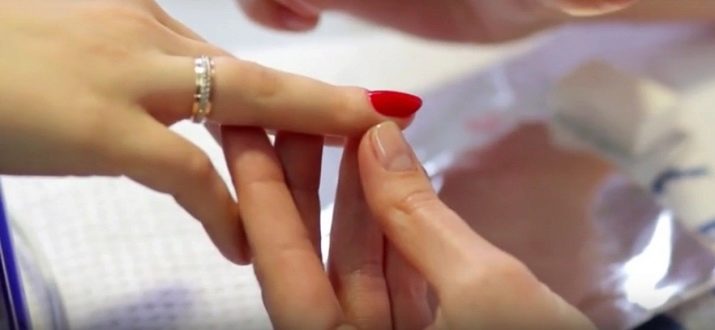
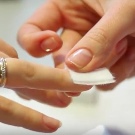

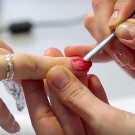


Removing shellac in an alternative way.
- The preparatory stage is identical: hands need to be washed, wiped off and applied to the skin of the fingers around the nail plates with an emollient cream.
- Pour acetone or gel polish remover into a small glass or porcelain container. You need enough liquid so that you can immerse the upper phalanges of the fingers.
- We wrap each finger with a small piece of plaster in one layer. The main thing is that the plaster covers the nail plates.
- We immerse the upper phalanges of the fingers in the liquid and wait 10-15 minutes.
- Then the patch can be removed. Remove the shellac softened in the solution with an orange stick.
- The final stage is the polishing of the nail plates.

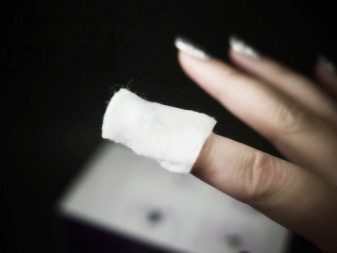
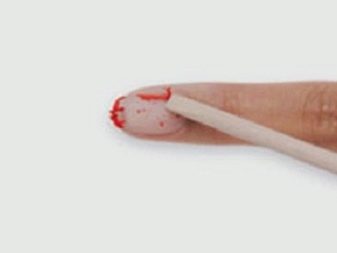
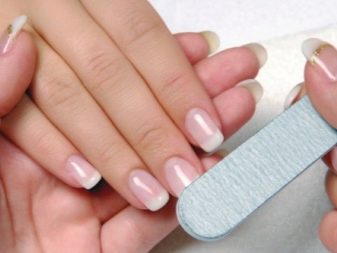
Removing shellac without harm
In order not to harm your marigolds some mistakes should be avoided.
- Never use hard metal saws or other sharp tools to cut down hard surfaces. This is fraught with nail injuries, not to mention the damaged appearance of the nail plates.
- Do not overdo it when cutting the top coat. If you sand the surface of the shellac layer too intensively, you can damage the nail itself. Damaged nail plates will have to be treated and restored for a long time.
- Shellac must be softened first. But the use of gasoline, kerosene or acids for these purposes is strictly contraindicated. Solvents should not be too aggressive. From the listed substances, the skin and nails will be very damaged.
- According to the observations of experts, the dissolution and discharge of shellac from the nail plates depends on the ambient temperature. The coating is more difficult to remove if the room is cool or the woman has cold hands during the procedure. At home, you should also take care of the temperature conditions. Many girls warm up their fingers wrapped in foil with a hair dryer and claim that this significantly speeds up and facilitates the entire process of removing a manicure.
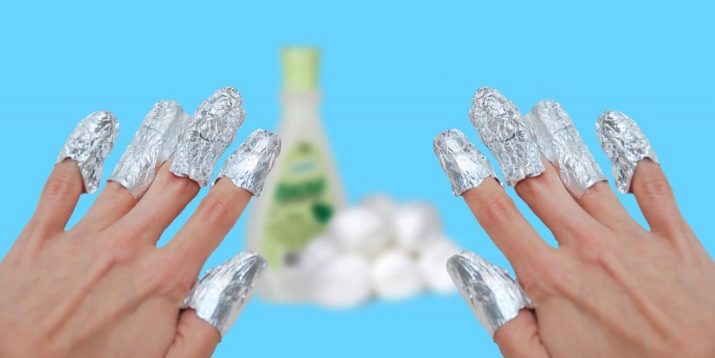
Precautions during the procedure:
- Be aware of your sensations when coming into contact with acetone or dissolving liquid. If you feel your fingers are sore, or have burning, tingling, or other discomfort, stop immediately. Such manifestations can be a sign of an allergic reaction or serious skin irritation.
- Even professional nail polish removers are quite toxic. They give off a pungent odor, and at high concentrations in the inhaled air, they can irritate the respiratory tract and organs. Therefore, the removal of varnish with such a means should be carried out in a well-ventilated area.
- Avoid contact of aggressive solvent liquids with mucous membranes or damaged skin.
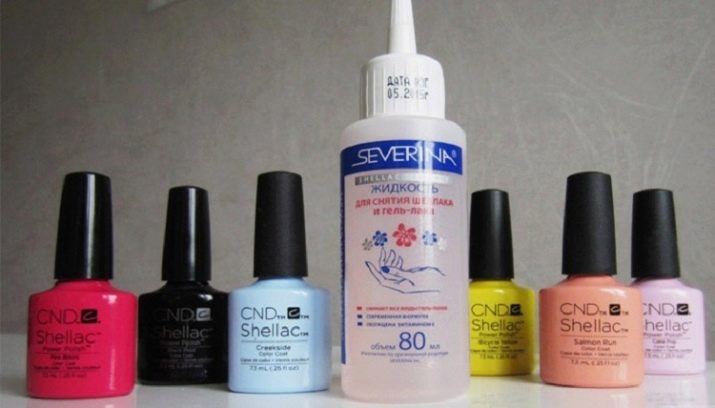
Post-withdrawal care
To keep the nails healthy, strong and beautiful, it is important to regularly take care of them. The process of removing the shellac layer involves contact with aggressive solvent compounds, therefore, after such a traumatic procedure, a number of measures should be taken to restore the nail plates.
- Salt iodine baths perfectly strengthen nails. Pour 150-200 ml of warm water into a small container. Add 1 tbsp there. a spoonful of salt (preferably sea salt) and a few drops of iodine. The solution should turn slightly brown. Soak your fingers in the bath for 15-20 minutes.
- Essential oils of pine, bergamot, lavender can be added to the saline solution. Essential oils of citrus fruits: orange, lemon, grapefruit have a wonderful healing effect.
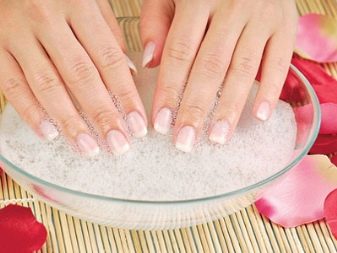

- Spoil your marigolds with herbal decoctions. They can be prepared from yarrow, nettle, oak bark, chamomile. Raw materials, taken in the amount of 1 tablespoon, should be poured with a glass of boiling water and left in a closed thermos for half an hour. After - strain the broth and cool until warm. For the best effect, you can add iodized sea salt to the herbal bath.
- Beer brewed chamomile infusion is also a good home remedy for marigold health. A glass of dark beer should be heated in an enamel saucepan, but not boiled. Pour 1 tbsp into a thermos. a spoonful of chopped chamomile and pour hot beer. Insist the mixture for 15-20 minutes, then strain and let cool slightly. Apply the resulting composition in the form of baths lasting about 15 minutes. This recipe gives excellent results and can be used every day without harm to the appearance and condition of the nails.
- Lemon juice is very beneficial for the nail plate. It is rich in vitamin C and has a mild whitening, regenerating and growth-promoting effect of marigolds. To soften the acids contained in lemon juice, the agent is used in a mixture with glycerin and honey. To prepare the medicinal composition, you need to mix the components in the following proportions: 100 g of glycerin, 1 tbsp. spoon of honey, 2 tbsp. tablespoons of freshly squeezed juice. To make the procedure comfortable, it is better to warm the mixture until warm. The tool is used in the form of baths. The fingers should be immersed in a warm mixture for 15-20 minutes.
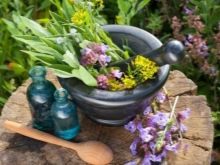
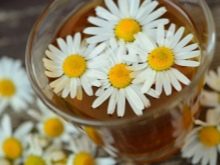
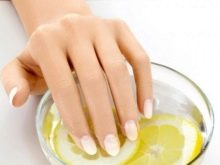
- After each treatment, it is useful to lubricate the nails and the skin around them with nourishing creams or oils. After that, the marigolds always look shiny and well-groomed.
- You can purchase special firming and health creams or nail gels. They include vitamins and medicinal components. Also, the nail plates respond well to treatment with conventional nourishing cream or grape seed oil.
How to remove shellac at home, see the next video.









I always took off by simply holding my hands in hot water, as far as tolerable, or by washing things with powder beforehand. Everything does not go away immediately, it is necessary to carefully remove the film in pieces. I have known this varnish for a long time, and we originally shot under water and will always be. But I rarely use it: 1-2 times a year. I usually don't paint my nails with anything.